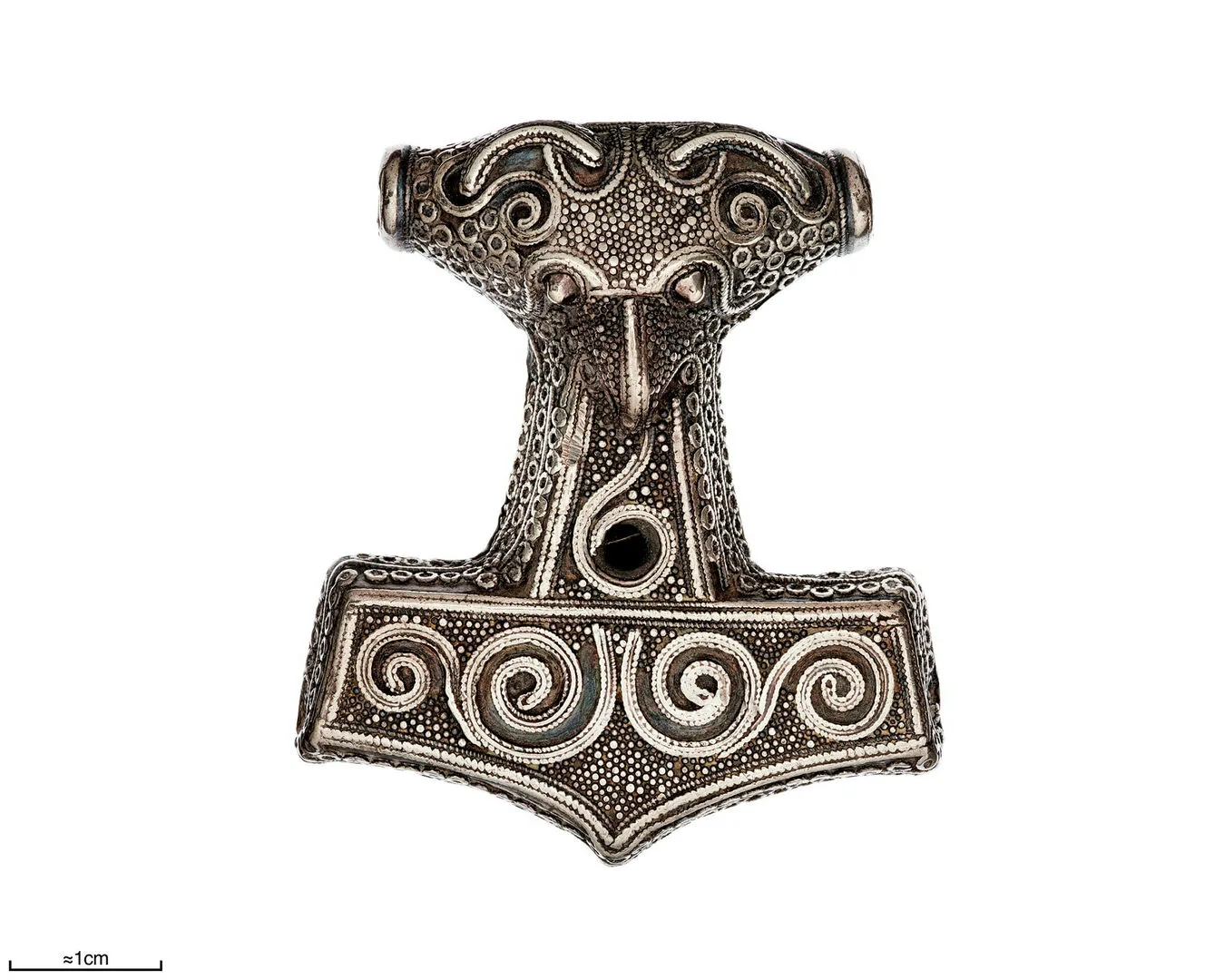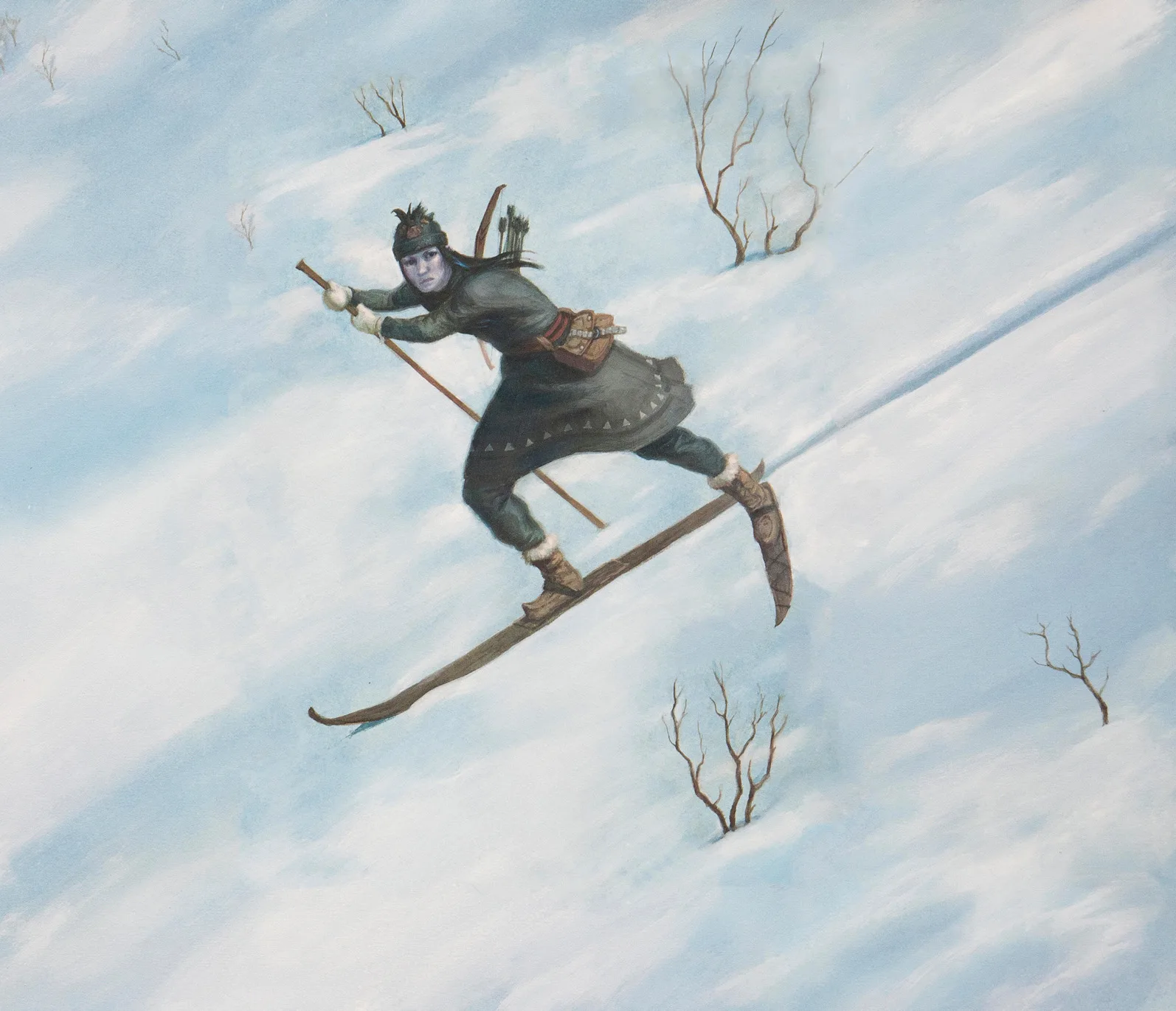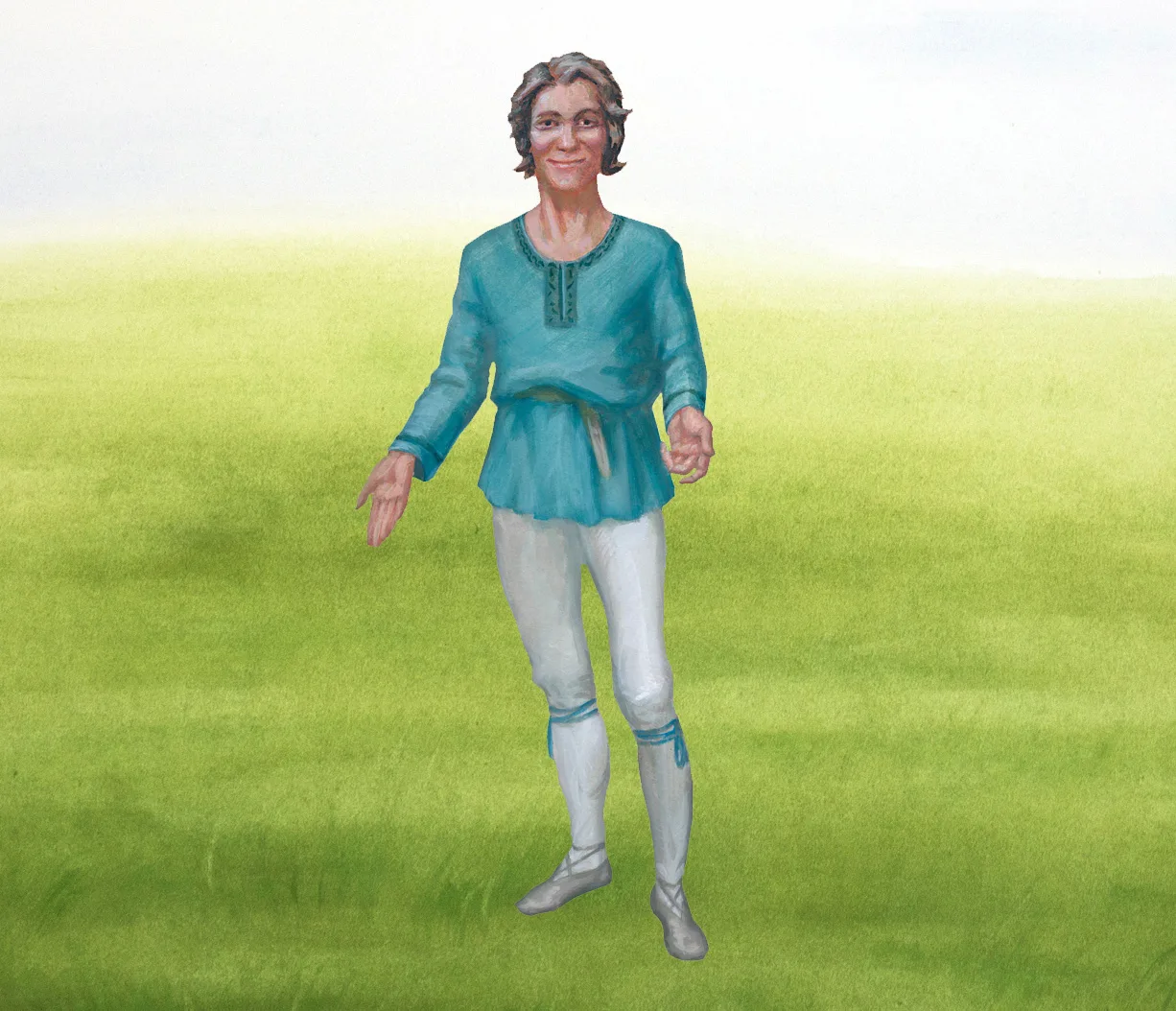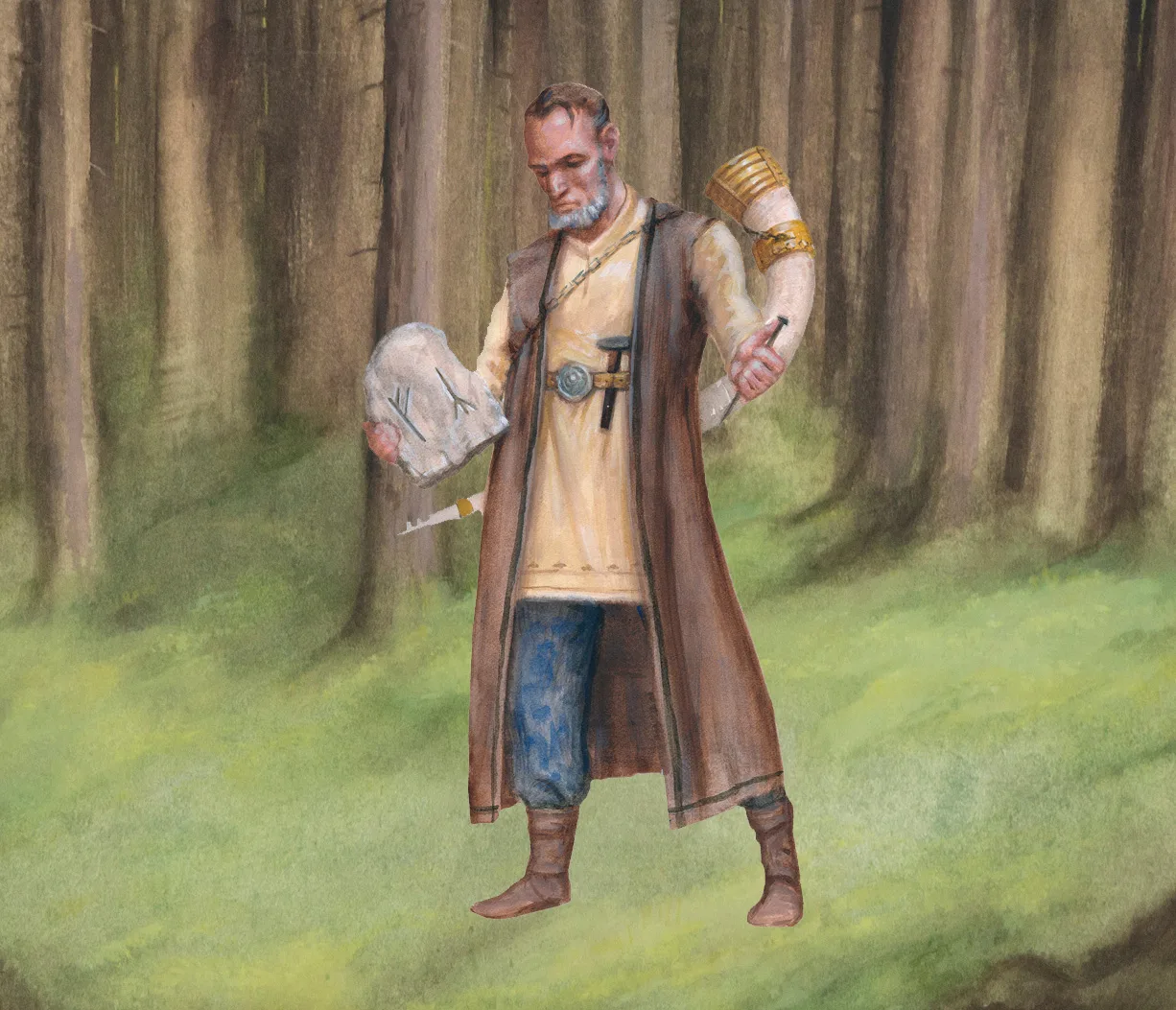Thor – God of Thunder
Iron Age
500 BC – AD 1100
Viking Age
AD 800 – AD 1100
Middle Ages
AD 1050 – AD 1520
Thor is the son of Odin and Fjorgyn, or Jörd (Earth), and is married to Sif. He has a hearty appetite and a fondness for mead, the honey-drink. As guardian of cosmic order, he battles giants and other monsters. His presence in so many tales is perhaps due to his sheer power and strength.
Mjölnir – Thor’s mighty hammer
Thor possesses three mighty treasures which he uses in the struggle for order against chaos and the giants: Mjölnir, the hammer that never misses its mark when thrown; Megingjörð, the belt of strength that doubles his power; and a pair of iron gauntlets.

Pendant
A Thor's hammer of silver found in Skåne.
On view at Historiska museet in the exhibition Guldrummet
The legend goes that the giant Thrym once stole Thor’s hammer and buried it deep beneath the earth. Without his hammer, the gods and their whole world were under threat. Loki, usually cunning and untrustworthy, decided to help on this occasion.
He went to Thrym and asked what he demanded in return for Thor’s hammer. Thrym replied that he would only return it if he could marry the goddess Freyja. But Freyja refused outright and flew into such a rage that all of Asgard shook.

Ring of Thor's hammers
A ring with four Thor's hammers found in Rissne, Uppland.
Freyja's necklace, Brísingamen
The gods put their heads together to find a solution. Heimdall suggested they accept the giant’s demand, but that Thor should disguise himself in bridal attire, don Freyja’s necklace Brísingamen, and go in her stead.
Now it was Thor’s turn to be angry. He wanted nothing to do with dressing in women’s clothes. But the gods managed to persuade him, and Loki accompanied him as bridesmaid.
Amidst a thunderstorm they reached Jotunheim, the realm of the giants, where a great feast awaited, with much food and drink. Thrym looked on in astonishment as “Freyja” devoured an ox, eight salmon, and drained an entire cask of mead. Quick-witted Loki explained that “Freyja” had yearned for the giant so intensely that she had not eaten for eight days.
Saving the world of the gods with Mjölnir
When Thrym then sought to kiss his bride, he recoiled in terror from the wild gleam in “Freyja’s” eyes. Once again Loki was swift to explain that she had not slept for eight nights for longing. At last, Mjölnir was brought up from beneath the earth and, as was custom at weddings, laid in the bride’s lap. But then Thor revealed his true self and brought the hammer crashing down upon the skulls of all the giants. The world of the gods was saved!
Facts about Thor
- Name: Thor (also spelt Þórr or Tor)
- Parents: Odin (father) and Jörd (mother)
- Siblings: Baldr and Höðr (half-brothers)
- Attributes: Strong, brave, protective, honourable
- Symbolism: Thunder, strength, protection, battle against giants
- Resides: Bilskirnir in Thrudvang (part of Asgard)










